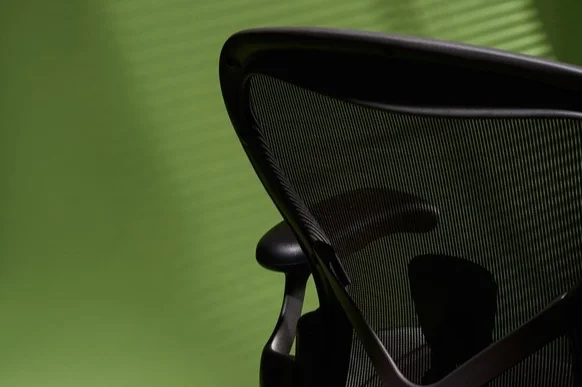WHEN PRODUCT DESIGNER Bill Stumpf was asked by Herman Miller to develop ergonomic seating for the 1990s workplace, he began by watching people at work. What he saw was pandemonium. Personal computers had freed employees to assume any position. They’d lean forward, squinting at the screen, or kick back, keyboards in their laps. With materials expert Don Chadwick, Stumpf built a chair as flexible as the restless startup worker. Introduced in 1994, the Aeron was designed to cradle a person in any posture. They engineered the tilt mechanism so the seat and backrest moved together in one motion for more supportive reclining. They also switched out leather upholstery for an elastic polymer mesh. The stretchy webbing—originally created to protect the elderly from getting bed sores—was added to let the body breathe. It also gave the Aeron an engineered look. Within months, the chair became what New York magazine dubbed a “dotcom throne”—a four-figure status symbol that rose and fell and rebounded with the fortunes of Silicon Valley. The Aeron was rebuilt again in 2016, with updates to the tilt mechanism and webbing that made it ever more flexible. What hasn’t changed is the appearance, which now evokes a bygone era when dotcommers actually went to an office.


